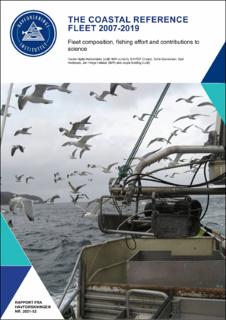| dc.description.abstract | Catch quotas are used for the sustainable management of fish stocks and are based on official catch statistics and research surveysSustainable management of the Norwegian fisheries depends on quota advice that is based on stock assessments, using scientific data from research surveys and official landings statistics. The official landings statistics are given in metric tons, and for vessels less than 15 meters only include rough information on fishing effort. The research cruises, on the other hand, only take place in certain areas and at certain times of the year. However, these methods provide only partial information, as the official catch data at best include rough measures of effort, and the survey data are only collected at certain times of the year. In 2005, the Norwegian Coastal Reference Fleet (CRF) was established by the Institute of Marine Research (IMR) ,to obtain data at-sea on in order to register catches in numbers per species including size- and age composition, discards, and bycatch, as well as data on fishing , gear, and effort. The vessels in the CRF were selected along the entire coast using criteria to ensure that they as represent able for the Norwegian coastal fishing fleet as closely as possible. These historic data and the development of the CRF are evaluated have been ccomprehensively visualisedin , and this report, using descriptive methods and provides a description and visual displaysanalysis of the CRF data. Between 2007-2019, a total of 64 fishing vessels particip ated in the CRF along the Norwegian coast collecting data from a cumulated total number of 287 taxa, and from 29 137 individual fishing operations. The most common species was cod (Gadus morhua), which occurred in 60.9% of the fishing operations. Throughout the study period gillnet was the most common gear in all years, but there were small shifts in the gear composition over time of the CRF shifted, however gillnet was the most common gear in all years. Catch per unit effort (CPUE) from fisheries standardises catch data for comparisons in both space and time and is often used as a proxy indices of for fish abundance, assuming constant catchability (the probability from 0 to 1 of a fish being caught per unit effort) over time. When collecting fisheries dependent data, however, fishers actively try to maximise catchability of their target species or species composition, by e.g., using different gears to handle natural variations in catchability dependent on season, and area. Broad coverage in space and time may reduce this human bias as well as providing information on the behaviour of the fishers and the effect of technological advancements. This report includes CPUE timeseries for cod, haddock (Melanogrammus aeglefinus), and golden redfish (Sebastes norvegicus) north of 62°N. | |
